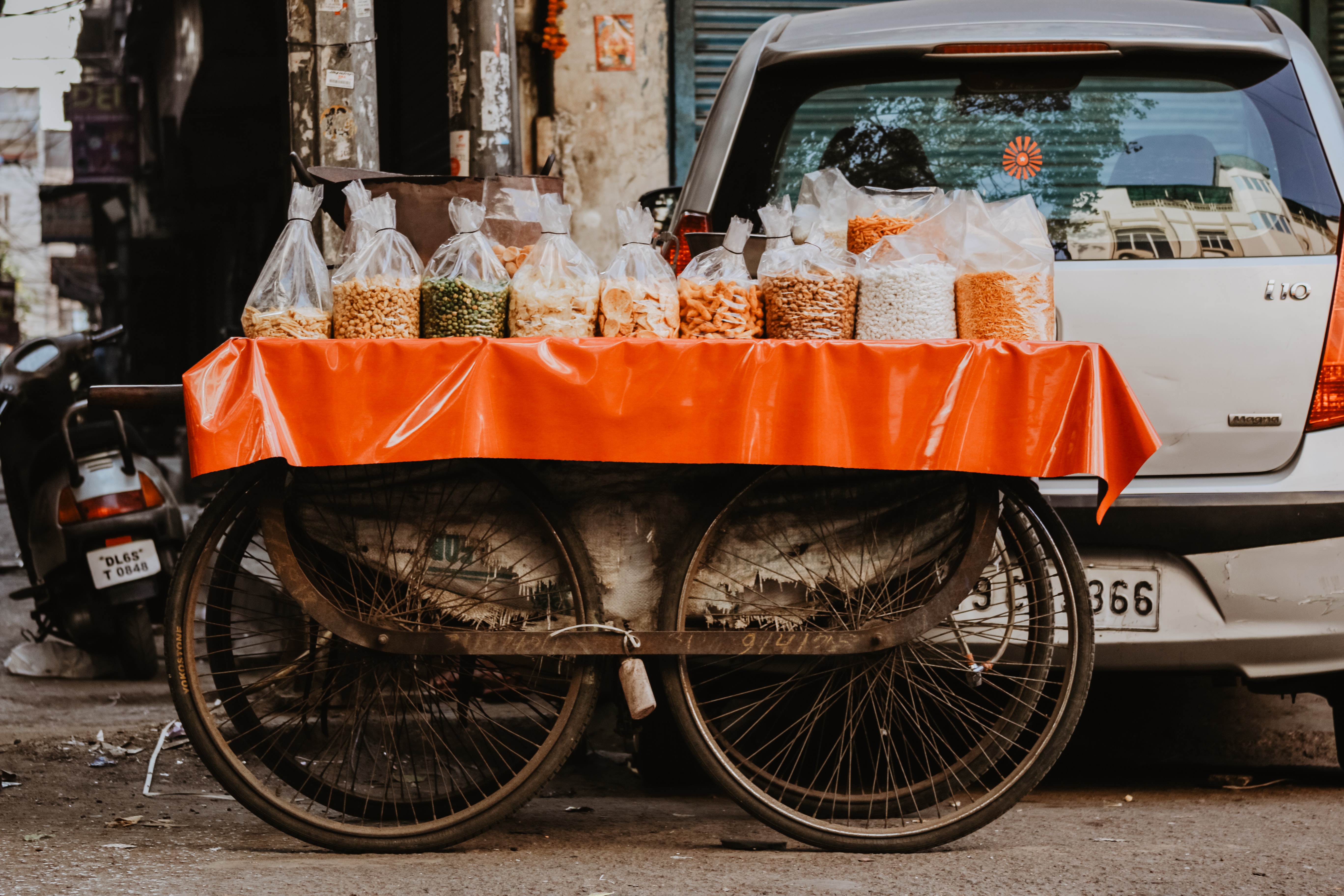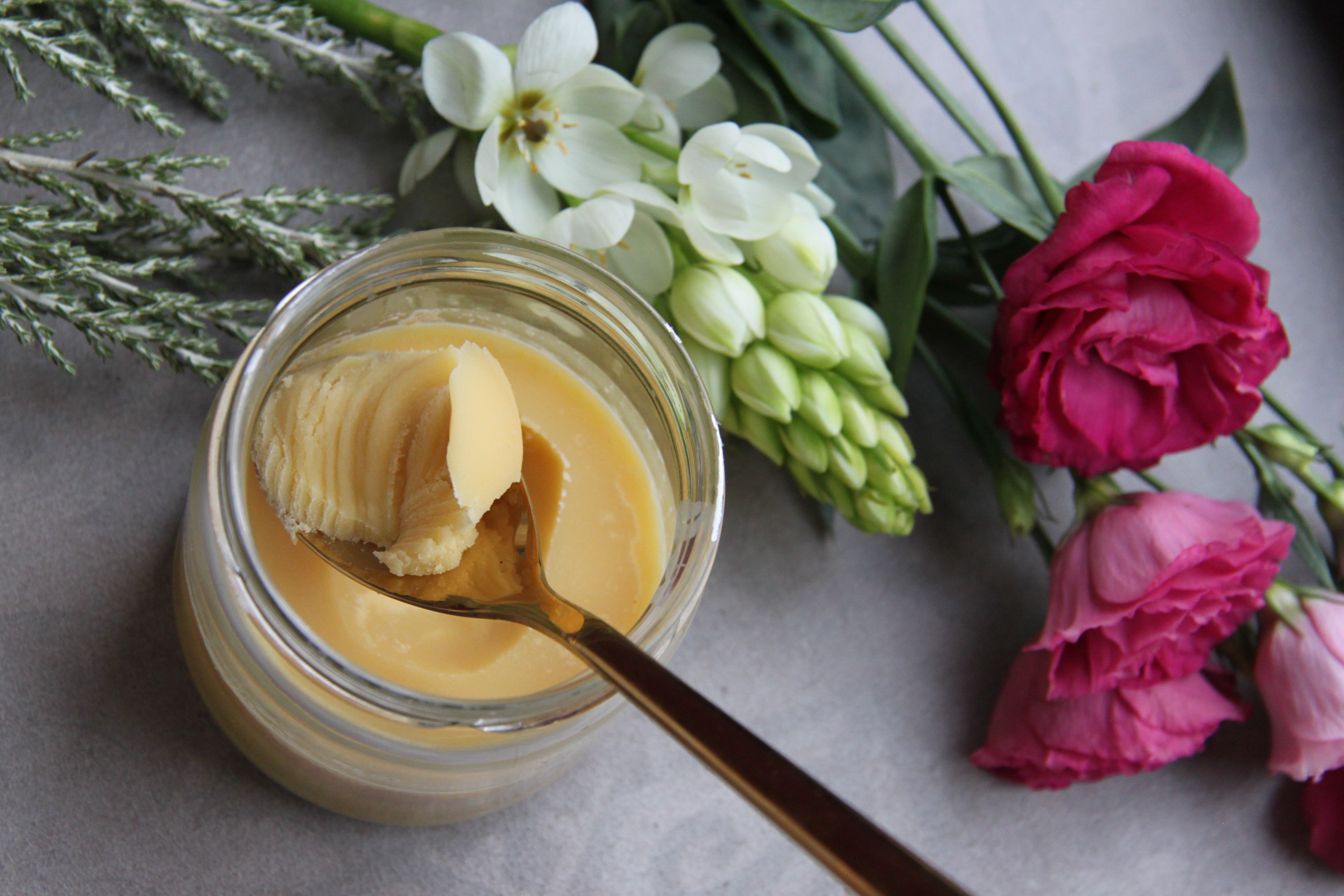How is Ghee Made?
If you haven’t yet come across ghee, chances are that it’ll be on your radar soon.
Ghee is a clarified butter — and it’s rapidly gaining in popularity across Western countries.
Ghee is traditionally made in India and has been used in Middle Eastern diets for a seriously long time. But what actually is ghee? And how is it made?
Read on to find out how your company can start producing and selling ghee products…
What is ghee?
Ultimately, ghee is butter that has been clarified.
This is achieved through a simmering and straining process. Cooking traditional butter over a low heat causes all of the water in the product to evaporate away — leaving just the milk solids behind.
These milk solids are then left on a low heat, until they start to brown and caramelize.
The process gives ghee a fantastic nutty flavor — which is what makes it so delicious!
But where did ghee originate from, and why is it suddenly being hailed as a ‘superfood’ across the globe?

Where did ghee originate from?
Ghee originally comes from India where it has been viewed as a staple food item for thousands of years. It was originally created to solve the dilemma of trying to store butter in an Indian climate (which was pretty much impossible before the invention of refrigerators!)
By clarifying butter, the product’s shelf life was vastly extended.
And so, ghee took off across India and the Middle East!
Since then, ghee has become an extremely common ingredient in Indian cooking — and is referenced in thousands of Indian recipes and cookbooks.
In fact, it’s so linked with India’s history, that it’s even referenced in Hindu mythology!
So, that’s the origin of ghee. But in today’s world, when we can store butter for a much longer period, why is ghee becoming more popular than it ever has been?
Well, on top of the long storage life, ghee also has a ton of other benefits. Here are just a few:
It has a much higher smoke point
Because ghee doesn’t include the same amount of water that’s found in traditional butter, it also has a much higher smoke point.
The burning point of butter is just 350 degrees Fahrenheit, while ghee’s is a lot higher at 465 degrees.
This means that it takes longer to burn — and is therefore far easier to cook with.
It doesn’t contain any lactose
Through the clarifying process, all of the lactose in the butter is removed. This makes it the perfect alternative for people who are lactose intolerant.
It gives food a beautiful nutty flavor
Because ghee has been slightly caramelized, it has a beautiful, rich flavor.
It can help to add a deep, nutty flavor to your food in a way that traditional butter can’t.
It boosts your Vitamin A intake
Vitamin A is really important for your eyes, skin, and immune system — and ghee contains loads of it. So, if you need to increase your Vitamin A intake, adding ghee into your diet is a really good idea.
It contains high concentrations of Omega-3s
Ghee is rich in fat, but it also contains lots of Omega-3s. This means that it can help to support a healthy heart when eaten as part of a balanced diet.
How is ghee made?
There are several ways to make ghee. Here are five of the most common methods:
How is ghee made using milk butter?
In this method, sour raw milk is first churned into butter. The butter is then boiled in a pan until all of the water has evaporated.
Once this process has happened, the ghee is then transferred and stored.
How is ghee made using fresh cream?
An alternative method is to start with fresh, cultured, or washed cream. The cream is heated for a long time, until it is directly converted into ghee.
This process creates ghee with a really rich, caramelized flavor.
How is ghee made using cream butter?
In this method, fresh milk is first separated into cream.
Once this has happened, the cream then needs to be churned into a thick butter. This butter is then heated as in the first method above until it is converted into ghee.
 How is ghee made using pre-stratification?
How is ghee made using pre-stratification?
This method is great for large amounts of butter.
This process starts by heating the butter at around 176–185 °F for around half an hour. Layers of fat, buttermilk, and protein particles are induced, before the buttermilk is then drained out.
The fat that is left over is then heated again over a high temperature, to make sure that all moisture has been removed — and to create a lovely deep flavor.
How is ghee made by adding in yogurt?
Another common way to create ghee is to add in yogurt.
In this method, raw milk is first boiled, and then left to cool to around 109 °F. The milk is then covered and then left for 12 hours at room temperature. After this amount of time, a dash of yogurt is added in — and this is then left again overnight.
In the morning, the mixture is then churned with water. This eventually creates cultured butter, which is then simmered until it has converted into ghee.
Industrially produced ghee for CPGs
These methods are all common ways of making ghee. Some are more suitable for home-cooking, however.
When large companies industrially produce ghee, they will often skip the first step of creating butter. Instead, most companies will opt to purchase ‘white butter’, which is butter made from fresh milk and cream, directly from dairy farms.
They can then heat this in large quantities to convert the butter into ghee.
Storing ghee
We’ve explored how ghee is made. But what about storing it?
If your CPG company is looking to start producing ghee, it’s important that you know the correct way to store it. After all, it’s not the same as traditional butter — which means it’s also not stored in the same way.
Let’s delve into the best conditions for storing ghee…
You don’t need to refrigerate it, but this will extend its shelf life even further
Because all milk solids have been removed from ghee, the final product doesn’t actually need to be refrigerated.
As long as it’s stored in a relatively cool and dark place, an unopened jar of ghee can actually stay fresh for as long as 9 months. And even once the jar has been opened, the product will last for around 3 months in the same conditions.
So, ghee doesn’t need to be refrigerated, but doing so will extend the product’s shelf life even further.
If your CPG company is starting to produce and sell ghee, it makes sense to store your ghee product in refrigerated conditions for as long as possible.
A commercial refrigerator will help to keep your ghee really fresh before it gets distributed to retailers — and this means it will last longer once consumers have purchased it.

Using ghee in CPG
If you’re still on the fence about whether ghee is a trend that your company should get on board with, just think about all the ways it can be used!
Here are just a few examples:
As a cooking oil
The most obvious way to package and sell ghee is as a cooking oil.
Ghee’s high smoke point makes it an easier and healthier alternative to using butter in cooking.
Consumers can use ghee as an oil in a variety of recipes — especially when sautéing and deep-frying foods.
So, promoting your ghee as an alternative cooking oil is a guaranteed way to catch the attention of these consumers!
In baked goods
If your company also produces consumer packaged baked goods, consider using ghee in these products.
Ghee will give your baked goods a lovely rich flavor. What’s more, if used instead of butter, it will make the product suitable for those with lactose intolerance.
That means you’ll appeal to more consumers with your baked goods — which is always a good thing!
In beauty products
Perhaps a slightly more unusual way to use ghee, but still just as effective, is in beauty products.
If your CPG company already produces cosmetic items, ghee can be a great ingredient to add to your products. Because it’s a great moisturizer, ghee can help to support healthy hair and skin when used cosmetically.
That means it can be added to soaps, moisturizers, and even shampoos.
So, as you can see, the uses of ghee really are endless.
Need help with distributing your ghee products?
Here at Buffalo Market, we deliver premium frozen, refrigerated, and dry products to major retailers across the country up to 7 days a week.
Our direct store delivery and merchandising services have been proven to have a dramatic impact on the sales of the brands we represent.
Need help with distributing your Ghee products to the best retailers? Request a distribution evaluation today.


